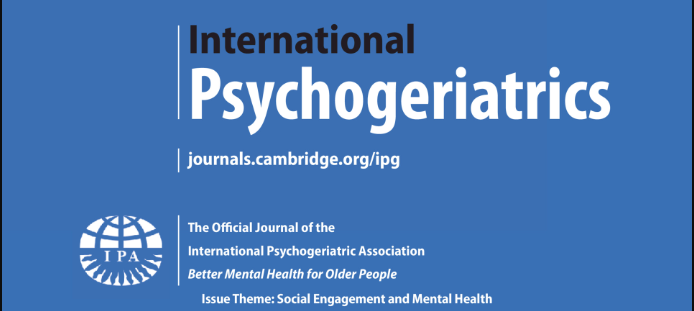FC20:西班牙东南部路易体痴呆症的患病率、发病率和临床特征
IF 4.6
2区 医学
Q1 GERIATRICS & GERONTOLOGY
引用次数: 0
摘要
背景:路易体痴呆症(LBD)是 65 岁以上人群中第二常见的退行性痴呆症(1,2)。路易体痴呆的诊断率很低,在日常临床实践中只有三分之一的患者被正确诊断(3);有关该疾病分布情况的数据也很少。我们的研究旨在测量枸杞多糖症在西班牙东南部的发病率、流行率和临床特征。方法:2021 年 10 月 18 日至 2022 年 10 月 17 日期间,在 San Vicente del Raspeig 对枸杞多糖症进行前瞻性流行病学研究。根据 2019 年人口普查结果,60 岁及以上人口总数为 11445 人(男性 5227 人,女性 6218 人)。枸杞多糖症的诊断基于 2017 年麦克吉斯标准。为提高诊断的确定性,仅登记了 "可能 "病例。对一年内的发病率进行了研究。收集的数据包括性别、年龄、枸杞多糖症的主要症状、异常生物标志物、神经精神症状、药物治疗、确诊后的年数以及最后一次就诊时的GDS评分(Reisberg)。结果:60 岁以上人群的总体患病率为 0.67%,年发病率为 3.2/1。发病病例的平均年龄为 78 岁(标准差为 7.5)。68.8%的患者接受过至少一种生物标记物的研究(主要是123I-ioflupane,较少使用多导睡眠图或MIBG伽玛仪);大多数患者有2或3种核心症状(79.2%)(依次为:帕金森病、视幻觉、快速眼动睡眠行为障碍和波动)。五分之二的流行病例处于疾病的早期阶段:22.1%为轻度认知障碍(MCI),16.9%为轻度痴呆。平均病程为 1.9 年(标准差 2.2)。多达74%的患者会出现其他神经精神症状(冷漠18.2%、焦虑19.5%、抑郁23.4%、轻微幻觉22%、妄想17%、听觉和触觉幻觉1.2%)。结论:发病率与之前的报告一致,发病率高于之前的报告可能是由于对 MCI-LBD 的高度关注以及我们作为转诊记忆科的专业性。我们发现老年妇女占多数,而且神经精神症状的发病率很高。本文章由计算机程序翻译,如有差异,请以英文原文为准。
FC20: Prevalence, Incidence, and Clinical Features of Lewy Body Dementia in the South Eastern of Spain
Background:Lewy body dementia (LBD) is the second most common degenerative dementia in people over 65 (1,2). LBD is underdiagnosed, with only one third of patients correctly diagnosed in daily clinical practice (3); data on the distribution of the disease are scarce. Our study was designed to measure the incidence, prevalence and clinical characteristics of LBD in south-eastern Spain. Healthcare system in Spain is free and universal.Methods:Prospective epidemiological study of LBD in San Vicente del Raspeig between October 18, 2021, and October 17, 2022. The total population aged 60 or over based on the 2019 census was 11445 inhabitants (5227 males, 6218 females). Diagnosis of LBD was based on 2017 McKeith criteria. Only “probable” cases were registered for greater diagnostic certainty. Incidence was studied for the one-year period. Collected data included gender, age, cardinal symptoms for LBD, abnormal biomarkers, neuropsychiatric symptoms, medical treatment, years from diagnosis and GDS score (Reisberg) in the last visit. Protocol was approved by the ethical committee.Results:Global prevalence was 0.67% among the population over 60. Annual incidence was 3.2/1000 person-year.Mean age of prevalent cases was 78 years (SD 7.5). 68.8% were studied with at least one biomarker (mainly 123I-ioflupane and less frequent polysomnography or MIBG gammagraphy); most suffered 2 or 3 core symptoms (79.2%) (in descending order: parkinsonism, visual hallucinations, rapid eye movement sleep behavior disorder and fluctuations). Two out of five prevalent cases were in an early phase of the disease: 22.1% in mild cognitive impairment (MCI) and 16.9 % in mild dementia. Mean me of disease was 1.9 years (SD 2.2). Other neuropsychiatric symptoms appeared in up to 74% of patients (apathy 18,2%, anxiety 19,5%, depression 23,4%, minor hallucinations 22%, delusions 17%, auditory and tactile hallucinations 1,2%).Conclusions:Prevalence is in line with previous reports. Higher incidence than previously reported may be due to high attention on MCI-LBD and our expertise as a referral Memory Unit. We found a wide dominance of aged women and high prevalence of neuropsychiatric symptoms.
求助全文
通过发布文献求助,成功后即可免费获取论文全文。
去求助
来源期刊

International psychogeriatrics
医学-精神病学
CiteScore
9.10
自引率
8.60%
发文量
217
审稿时长
3-6 weeks
期刊介绍:
A highly respected, multidisciplinary journal, International Psychogeriatrics publishes high quality original research papers in the field of psychogeriatrics. The journal aims to be the leading peer reviewed journal dealing with all aspects of the mental health of older people throughout the world. Circulated to over 1,000 members of the International Psychogeriatric Association, International Psychogeriatrics also features important editorials, provocative debates, literature reviews, book reviews and letters to the editor.
 求助内容:
求助内容: 应助结果提醒方式:
应助结果提醒方式:


